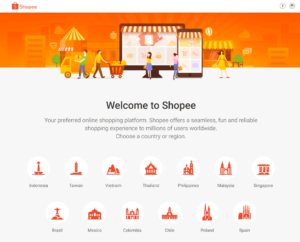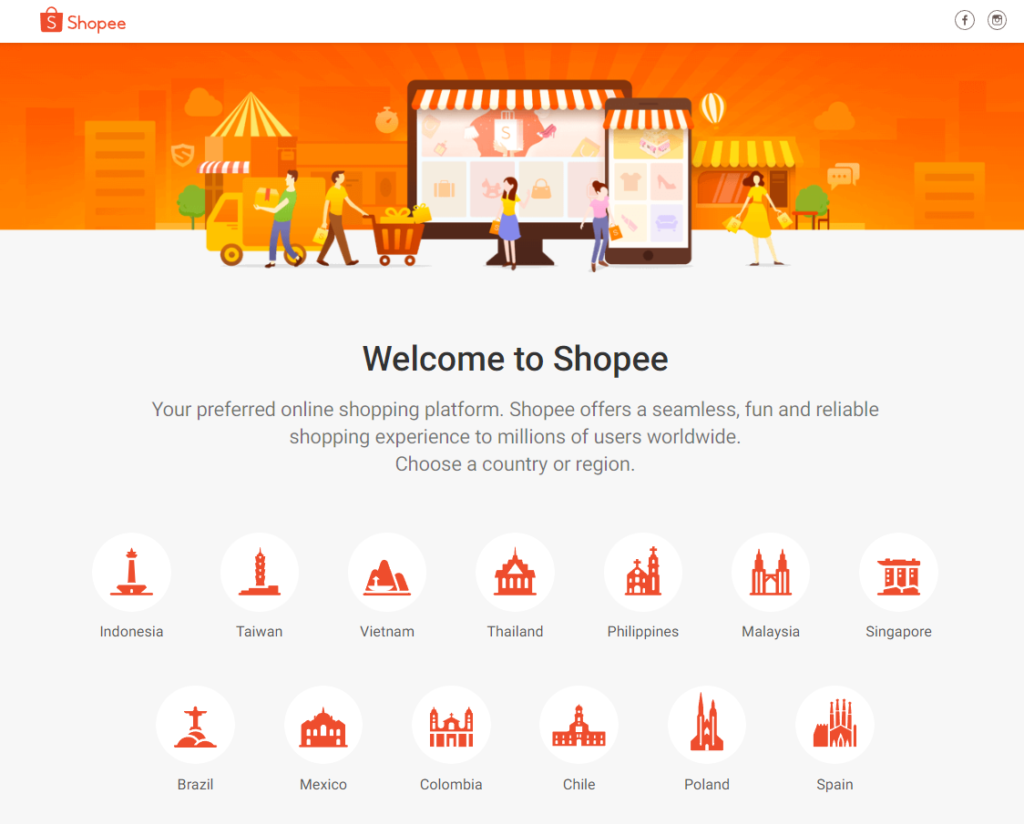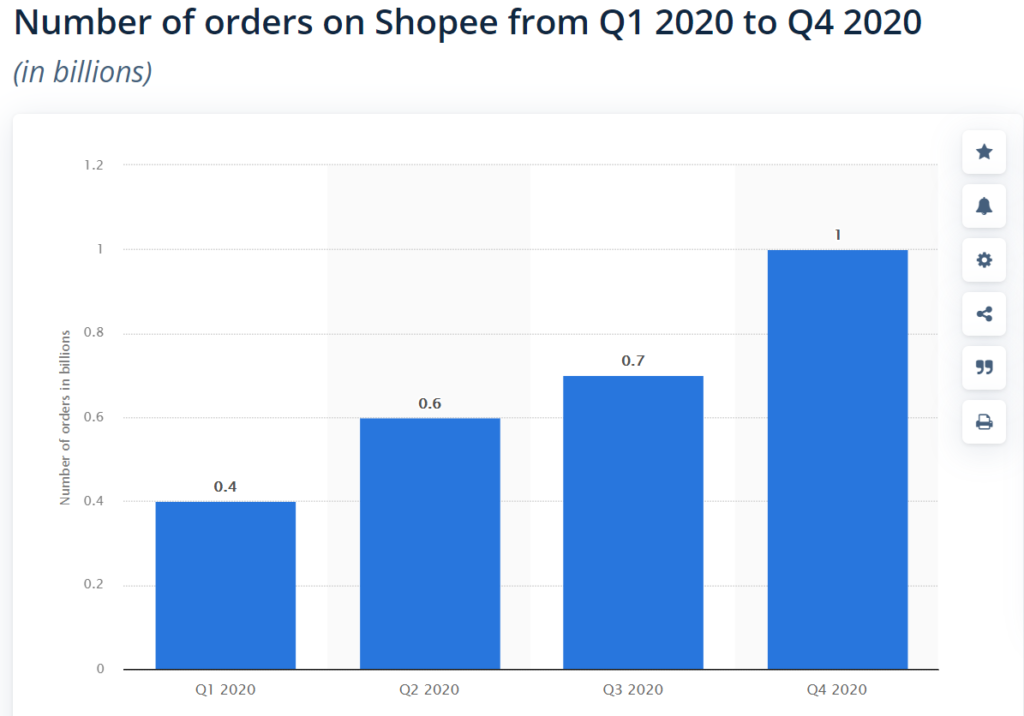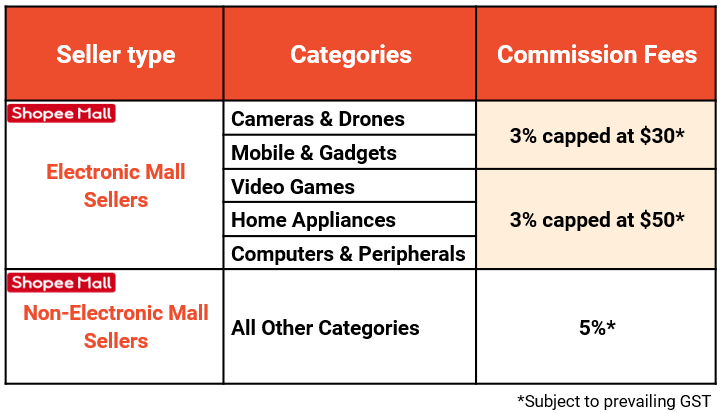
Shopee – key information about the Asian marketplace
- 03 November 2021
The Asian e-commerce market has transformed in the last few years and will undoubtedly grow in the next few decades. A good example is a Singaporean marketplace called Shopee. It fights for a strong position in the global e-commerce market with other rapidly developing platforms such as Lazanda and AliExpress. What distinguishes this new platform, and can it be a serious competitor to Aliexpress? Let’s find out!

Image source: https://shopee.com/index.html
Meet one of the biggest e-commerce marketplaces in South Asia
Shopee is a marketplace launched in Singapore in 2015. Since then, it has grown very fast, achieving great success not only in the Asian market. The Shopee platform is currently available in 13 countries, i.e., Indonesia, Taiwan, Vietnam, Thailand, Philippines, Malaysia, Singapore, Brazil, Mexico, Colombia, Chile, Poland, and Spain.
Shopee’s business model
In the beginning, Shopee was an app-based platform, but to compete effectively with other similar e-commerce platforms, they created a desktop website as well. Shopee started as a C2C platform. Today, it’s still mostly a customer-to-customer marketplace that provides an innovative way to allow customers to interact with each other. Later on, it evolved to become a hybrid of the C2C and B2C models. When it comes to Shopee, all products come from third-party sellers. They don’t have their own warehouses or products.
The main page of the Shopee online store welcomes users with advertisements and information on numerous discounts and interesting offers. Contrary to Aliexpress, Shopee has 25 product categories available on the website, such as food and beverages, video games, beauty, and personal care, etc.
The success of the Shopee platform
Shopee dynamically grows. According to Statista, the number of orders placed on this platform reached 1 billion in Q4 2020:

image source: Statista
During the recent 9.9 campaign in 2020, Shopee sold over 12 million items in the first hour of its 9.9 Super Shopping Day, with 700,000 items sold in a single minute at its peak period[1]. Currently, it’s difficult to assess how many users Shoppe actually has. As of June 2020, we know that there were over 290 million monthly visits from the entire Southeast Asia region, with the majority of visits coming from Indonesia[2].
Shopee’s offer for sellers
To start selling, you need to register a seller account on the platform. You start by downloading the app. Then, you have to upload your products and fill in product details. And that’s it – you can sell and earn money. Shopee has made a special section on their website, where they explain everything through short videos and animations.

With Shopee, you can sell a variety of products such as groceries, snacks, furniture, clothes, etc. What’s more, Shopee lets merchants manage different aspects of their business within one platform. All products, orders, shipping, and payments are available in one place. Moreover, there is no commission for marketplace sellers, and participation in several marketing tools is also free.
THREE TYPES OF SELLERS
There are three types of merchant accounts that users can register on Shopee:
Shopee Marketplace seller that operates in Singapore:
- Doesn’t have to pay any commission
- Has access to a wide range of seller marketing tools
- Has access to integrated logistics partners
- Receives free business tools and access to a seller center with information on their account’s performance
- Their account is open to everyone, including part-time sellers and resellers
Shopee Mall seller (this type of account is only for selected brand owners and distributors). Mall seller:
- Gets a “premium status”
- Has access to premium Shopee Mall marketing tools, campaigns, and vouchers
- Pays commission only for successfully fulfilled orders (3-5% commission fees, depending on the product category)

Find out more about commissions on Shopee here.
Shopee Supermarket Supplier (this type of account is only for local authorized distributors). Supermarket supplier:
- Gets a dedicated team for setting up the store and listing management
- Has increased brand and product exposure from exclusive Shopee-sponsored and Bank vouchers and access to a large base of >330K shop followers
- Can benefit from express delivery services provided by integrated logistics partners
- Has increased cross-selling opportunities
What do you need to know about selling on Shopee?
We gathered some of the most important information related to selling and running an account on Shopee:
WITHDRAWING EARNINGS
The Seller Wallet lets users withdraw their earnings in two ways: Automatically or manually. Every seller is entitled to one free withdrawal per week. Each additional withdrawal will incur a $0.20 fee.[3]
LOGISTICS SERVICES
Shopee has an integrated logistics service called Shopee Xpress (SPX). The average delivery time is 1 to 3 business days. Merchants can set a pick-up address where their logistics partners will pick up orders to be delivered to customers.
E-COMMERCE BOOSTER PACKAGE
The Shopee platform participates in the Singaporean e-commerce booster package that helps SME retailers transform their business so they can sell online or expand their business to the Singaporean market. Eligible local retailers will receive one-time support to defray 80% of qualifying costs (capped at S$8000)[4].
COMPETITORS’ PRICES
If you think about selling products on Shopee, you should first analyze competitors on this platform and their prices. With a price tracking tool you can compare prices from Shopee with information from different platforms, such as Amazon, Google Shopping or eBay. What’s more, you will receive insights about the possibilities to increase profit thanks to smart pricing moves on Shopee and in different channels.
Expand your e-commerce business
Looking for new places to showcase your offer is always a beneficial strategy. Now, you know much more about selling on Shopee. What about other marketplaces and platforms? To find out more, read the following articles on Dealavo’s blog:
- Multichannel selling: Which products to sell and promote on the most important e-commerce platforms?
We recommend downloading our free report as well in which we analyze prices, competition and trends on the most relevant marketplaces in 6 European countries: UK, Germany, France, Poland, Italy and the Netherlands. Apart from that, you’ll find there tips from 10 experts regarding the cross-border expansion. We hope it will help you make the decision about marketplaces which you have the biggest chance to stand out on:
[1] https://www.bworldonline.com/shopee-sells-1-8-million-items-in-a-minute-face-masks-top-list/
[2] https://blog.splitdragon.com/lazada-vs-shopee-performance-whos-winning-in-asia/
[3] https://seller.shopee.sg/edu/article/710
[4] https://www.enterprisesg.gov.sg/industries/type/retail/e-commerce-booster-package